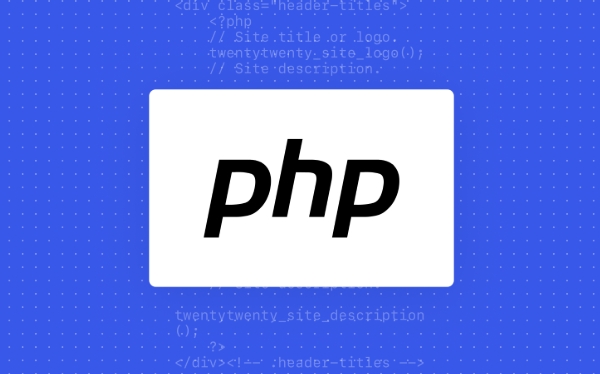深入了解PHP的内部垃圾收集机制
PHP的垃圾回收机制基于引用计数,但循环引用需靠周期性运行的循环垃圾回收器处理;1. 引用计数在变量无引用时立即释放内存;2. 循环引用导致内存无法自动释放,需依赖GC检测并清理;3. GC在“可能根”zval达阈值或手动调用gc_collect_cycles()时触发;4. 长期运行的PHP应用应监控gc_status()、适时调用gc_collect_cycles()以避免内存泄漏;5. 最佳实践包括避免循环引用、使用gc_disable()优化性能关键区及通过ORM的clear()方法解引用对象,最终确保内存高效管理以应对复杂场景。

PHP’s garbage collection (GC) mechanism is often overlooked by developers who assume that, as a high-level scripting language, memory management is entirely abstracted away. While PHP does handle most memory cleanup automatically through reference counting, understanding its internal garbage collection process—especially how it deals with circular references and resource cleanup—can help optimize performance and avoid memory leaks in long-running scripts or complex applications.

Let’s take a deep dive into how PHP manages memory and garbage collection under the hood.
How PHP Manages Memory: Reference Counting
At its core, PHP uses reference counting as the primary method for tracking and managing memory. Every variable in PHP is represented internally as a zval (Zend value), which holds the value and metadata like type and reference count.

Each time a variable is assigned or passed around, the reference count of its zval increases. When a variable goes out of scope or is unset, the reference count decreases. Once the count reaches zero, PHP immediately frees the associated memory.
For example:

$a = "hello"; $b = $a; // refcount becomes 2 unset($a); // refcount drops to 1 unset($b); // refcount drops to 0 → memory freed
This system is efficient and deterministic—memory is freed as soon as it's no longer needed, except when circular references are involved.
The Problem: Circular References
Reference counting fails when circular references occur—when two or more objects refer to each other, creating a cycle that keeps their reference counts above zero, even when they’re no longer accessible from the root of the application.
Example:
class Node {
public $parent;
}
$a = new Node();
$b = new Node();
$a->parent = $b;
$b->parent = $a;
unset($a, $b); // refcount doesn't reach zero due to cycleEven though $a and $b are unset, each still holds a reference to the other, so their zvals never get cleaned up. This creates a memory leak.
This is where PHP’s cyclic garbage collector comes in.
PHP’s Cyclic Garbage Collector
To solve this, PHP implements a cyclic garbage collector that runs periodically to detect and clean up circular references. It was introduced in PHP 5.3 and works alongside reference counting.
How It Works
The GC doesn’t run on every unset() or scope exit. Instead, it triggers under specific conditions:
- When the number of "possible root" zvals reaches a threshold (default: 10,000).
- Or manually triggered via
gc_collect_cycles().
A "possible root" is a zval with a reference count > 0 that might be part of a cycle. When such objects are detected, they’re added to a root buffer.
When the buffer fills up, PHP’s GC runs a two-phase cycle detection algorithm:
- Mark phase: Traverse all possible root objects and mark them as "grey".
- Scan phase: For each object, decrement the reference count of its children. If a child’s refcount remains > 0 but wasn’t a root, it’s part of a cycle.
Objects identified as part of a cycle are then cleaned up, and their memory is freed.
You can trigger this manually:
gc_collect_cycles(); // Force GC run
And monitor it:
var_dump(gc_enabled()); // bool(true) var_dump(gc_status()); // Shows runs, collected, etc.
Performance Considerations
While the GC prevents memory leaks, it’s not free:
- It adds overhead when tracking potential cycles.
- Running
gc_collect_cycles()too frequently can degrade performance. - In most web scripts (short-lived requests), the impact is negligible because memory is freed when the request ends.
However, in long-running PHP applications (e.g., daemons, CLI workers, or Swoole-based servers), uncollected cycles can accumulate and cause memory bloat.
Best Practices
- Avoid circular references when possible (e.g., use weak references or break cycles manually).
- Call
gc_disable()in performance-critical sections if you’re certain there are no cycles. - Use
gc_enable()and monitorgc_status()in long-running scripts to track collection. - Profile memory usage with tools like
memory_get_usage()and Xdebug.
Real-World Example: ORM Entities
Frameworks like Doctrine often create object graphs where entities reference each other (e.g., User ↔ Profile). If not managed carefully, these can form cycles.
Solution:
- Use
__destruct()to break references. - Or rely on Doctrine’s unit of work to manage object lifecycles and clear references after flush.
function processUsers() {
$users = $entityManager->getRepository(User::class)->findAll();
foreach ($users as $user) {
// process...
}
$entityManager->clear(); // Detach all objects
gc_collect_cycles(); // Clean up any lingering cycles
}Conclusion
PHP’s garbage collection is a hybrid system:
- Reference counting handles most memory cleanup instantly.
- Cyclic GC steps in to clean up circular references, but only when necessary.
While most developers don’t need to think about it during typical web request cycles, understanding this mechanism becomes crucial when building long-running PHP applications or dealing with complex object graphs.
The key takeaway? PHP does have a garbage collector—but it’s not a traditional tracing GC like in Java or Go. It’s a targeted solution for cycles, working on top of reference counting.
So while you can mostly trust PHP to clean up after itself, being aware of circular references and using tools like gc_status() and gc_collect_cycles() gives you finer control when needed.
Basically: reference counting does the heavy lifting, and the GC is the cleanup crew for the edge cases.
以上是深入了解PHP的内部垃圾收集机制的详细内容。更多信息请关注PHP中文网其他相关文章!

热AI工具

Undress AI Tool
免费脱衣服图片

Undresser.AI Undress
人工智能驱动的应用程序,用于创建逼真的裸体照片

AI Clothes Remover
用于从照片中去除衣服的在线人工智能工具。

Clothoff.io
AI脱衣机

Video Face Swap
使用我们完全免费的人工智能换脸工具轻松在任何视频中换脸!

热门文章

热工具

记事本++7.3.1
好用且免费的代码编辑器

SublimeText3汉化版
中文版,非常好用

禅工作室 13.0.1
功能强大的PHP集成开发环境

Dreamweaver CS6
视觉化网页开发工具

SublimeText3 Mac版
神级代码编辑软件(SublimeText3)
 如何用PHP搭建社交分享功能 PHP分享接口集成实战
Jul 25, 2025 pm 08:51 PM
如何用PHP搭建社交分享功能 PHP分享接口集成实战
Jul 25, 2025 pm 08:51 PM
在PHP中搭建社交分享功能的核心方法是通过动态生成符合各平台要求的分享链接。1.首先获取当前页面或指定的URL及文章信息;2.使用urlencode对参数进行编码;3.根据各平台协议拼接生成分享链接;4.在前端展示链接供用户点击分享;5.动态生成页面OG标签优化分享内容展示;6.务必对用户输入进行转义以防止XSS攻击。该方法无需复杂认证,维护成本低,适用于大多数内容分享需求。
 如何用PHP结合AI实现文本纠错 PHP语法检测与优化
Jul 25, 2025 pm 08:57 PM
如何用PHP结合AI实现文本纠错 PHP语法检测与优化
Jul 25, 2025 pm 08:57 PM
要实现PHP结合AI进行文本纠错与语法优化,需按以下步骤操作:1.选择适合的AI模型或API,如百度、腾讯API或开源NLP库;2.通过PHP的curl或Guzzle调用API并处理返回结果;3.在应用中展示纠错信息并允许用户选择是否采纳;4.使用php-l和PHP_CodeSniffer进行语法检测与代码优化;5.持续收集反馈并更新模型或规则以提升效果。选择AIAPI时应重点评估准确率、响应速度、价格及对PHP的支持。代码优化应遵循PSR规范、合理使用缓存、避免循环查询、定期审查代码,并借助X
 PHP打造博客评论系统变现 PHP评论审核与防刷策略
Jul 25, 2025 pm 08:27 PM
PHP打造博客评论系统变现 PHP评论审核与防刷策略
Jul 25, 2025 pm 08:27 PM
1.评论系统商业价值最大化需结合原生广告精准投放、用户付费增值服务(如上传图片、评论置顶)、基于评论质量的影响力激励机制及合规匿名数据洞察变现;2.审核策略应采用前置审核 动态关键词过滤 用户举报机制组合,辅以评论质量评分实现内容分级曝光;3.防刷需构建多层防御:reCAPTCHAv3无感验证、Honeypot蜜罐字段识别机器人、IP与时间戳频率限制阻止灌水、内容模式识别标记可疑评论,持续迭代应对攻击。
 PHP调用AI智能语音助手 PHP语音交互系统搭建
Jul 25, 2025 pm 08:45 PM
PHP调用AI智能语音助手 PHP语音交互系统搭建
Jul 25, 2025 pm 08:45 PM
用户语音输入通过前端JavaScript的MediaRecorderAPI捕获并发送至PHP后端;2.PHP将音频保存为临时文件后调用STTAPI(如Google或百度语音识别)转换为文本;3.PHP将文本发送至AI服务(如OpenAIGPT)获取智能回复;4.PHP再调用TTSAPI(如百度或Google语音合成)将回复转为语音文件;5.PHP将语音文件流式返回前端播放,完成交互。整个流程由PHP主导数据流转与错误处理,确保各环节无缝衔接。
 PHP实现商品库存管理变现 PHP库存同步与报警机制
Jul 25, 2025 pm 08:30 PM
PHP实现商品库存管理变现 PHP库存同步与报警机制
Jul 25, 2025 pm 08:30 PM
PHP通过数据库事务与FORUPDATE行锁确保库存扣减原子性,防止高并发超卖;2.多平台库存一致性需依赖中心化管理与事件驱动同步,结合API/Webhook通知及消息队列保障数据可靠传递;3.报警机制应分场景设置低库存、零/负库存、滞销、补货周期和异常波动策略,并按紧急程度选择钉钉、短信或邮件通知责任人,且报警信息需完整明确,以实现业务适配与快速响应。
 如何用PHP结合AI做图像生成 PHP自动生成艺术作品
Jul 25, 2025 pm 07:21 PM
如何用PHP结合AI做图像生成 PHP自动生成艺术作品
Jul 25, 2025 pm 07:21 PM
PHP不直接进行AI图像处理,而是通过API集成,因为它擅长Web开发而非计算密集型任务,API集成能实现专业分工、降低成本、提升效率;2.整合关键技术包括使用Guzzle或cURL发送HTTP请求、JSON数据编解码、API密钥安全认证、异步队列处理耗时任务、健壮错误处理与重试机制、图像存储与展示;3.常见挑战有API成本失控、生成结果不可控、用户体验差、安全风险和数据管理难,应对策略分别为设置用户配额与缓存、提供prompt指导与多图选择、异步通知与进度提示、密钥环境变量存储与内容审核、云存
 超越灯堆:PHP在现代企业体系结构中的作用
Jul 27, 2025 am 04:31 AM
超越灯堆:PHP在现代企业体系结构中的作用
Jul 27, 2025 am 04:31 AM
PHPisstillrelevantinmodernenterpriseenvironments.1.ModernPHP(7.xand8.x)offersperformancegains,stricttyping,JITcompilation,andmodernsyntax,makingitsuitableforlarge-scaleapplications.2.PHPintegrateseffectivelyinhybridarchitectures,servingasanAPIgateway
 如何用Mac搭建PHP Nginx环境 MacOS配置Nginx与PHP服务组合
Jul 25, 2025 pm 08:24 PM
如何用Mac搭建PHP Nginx环境 MacOS配置Nginx与PHP服务组合
Jul 25, 2025 pm 08:24 PM
Homebrew在Mac环境搭建中的核心作用是简化软件安装与管理。1.Homebrew自动处理依赖关系,将复杂的编译安装流程封装为简单命令;2.提供统一的软件包生态,确保软件安装位置与配置标准化;3.集成服务管理功能,通过brewservices可便捷启动、停止服务;4.便于软件升级与维护,提升系统安全性与功能性。







